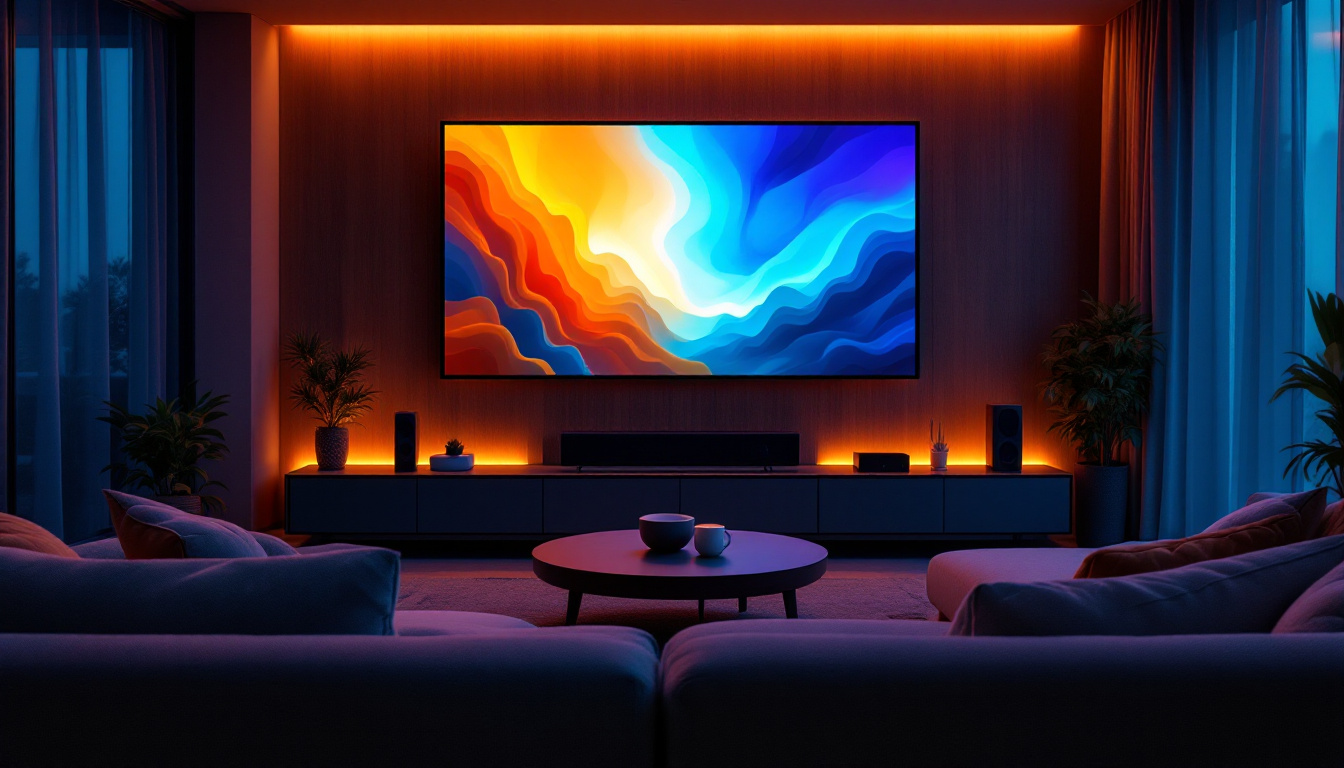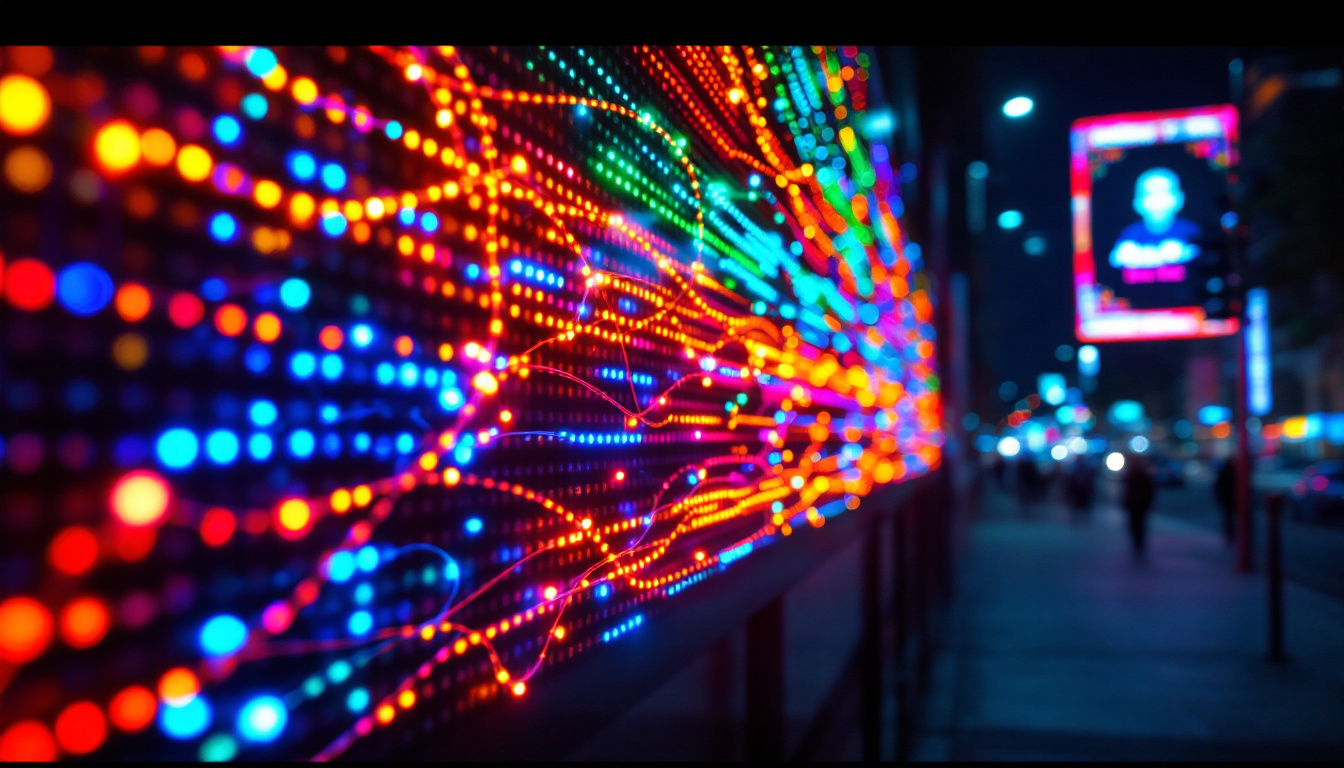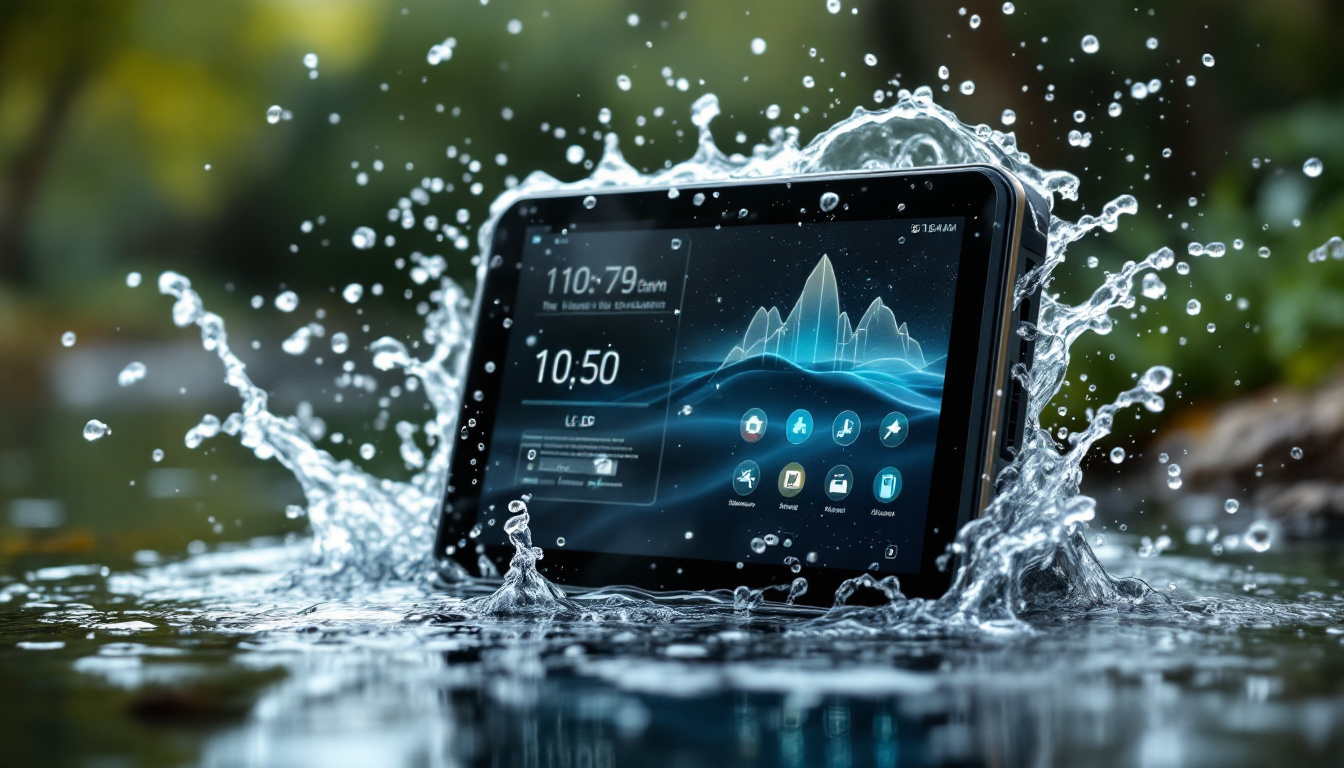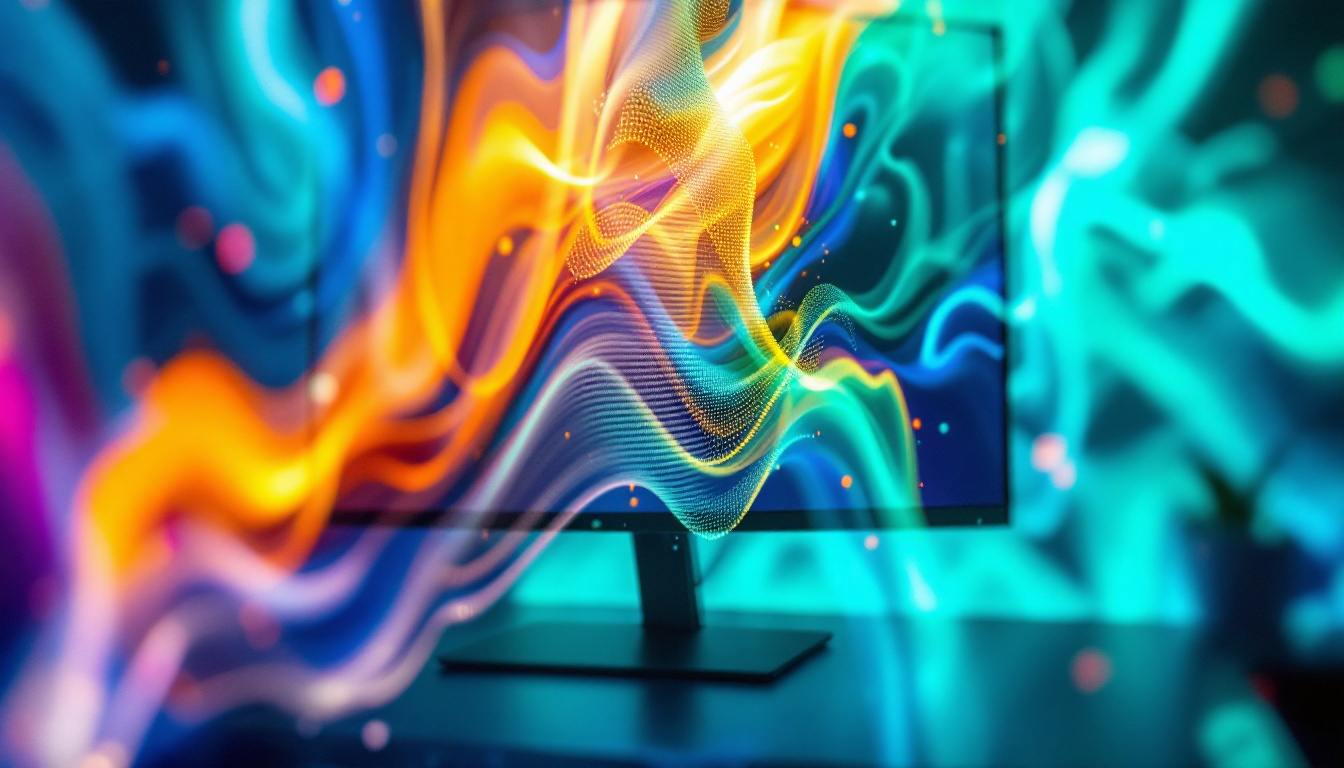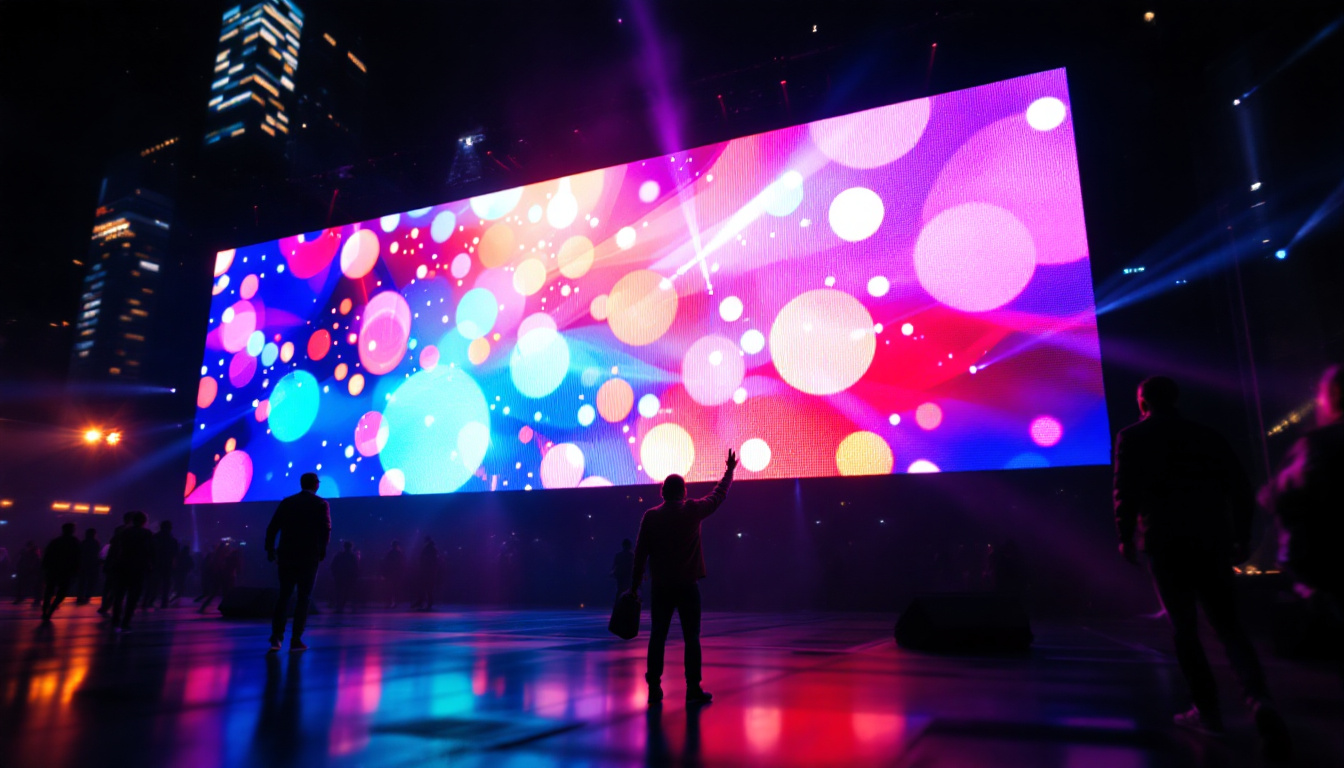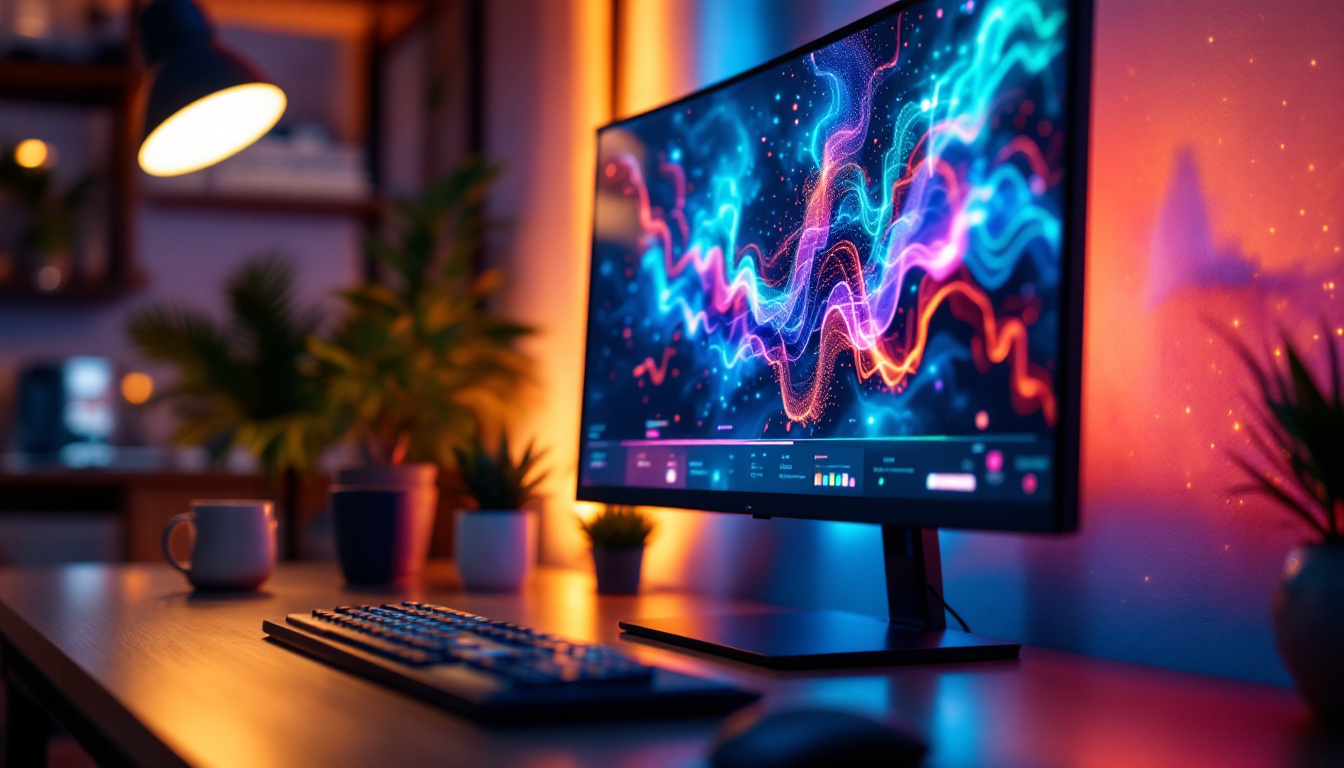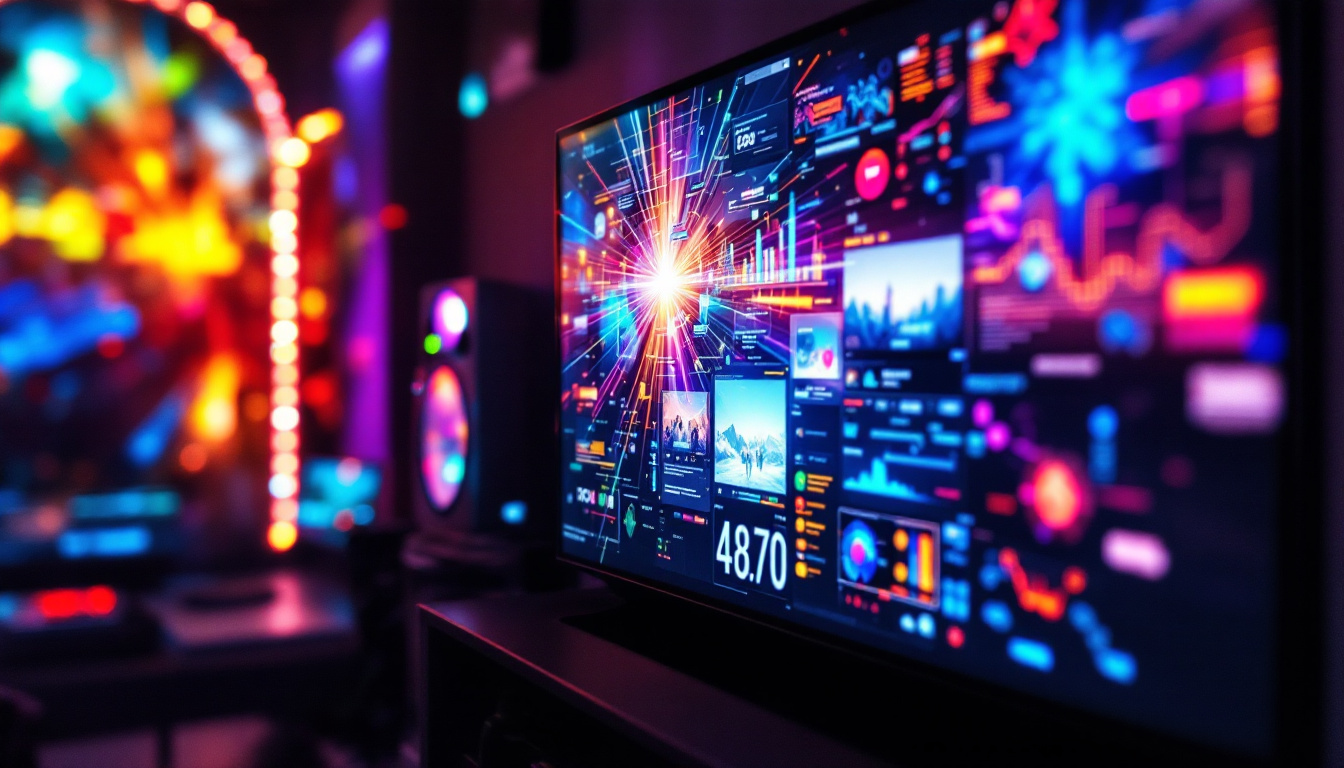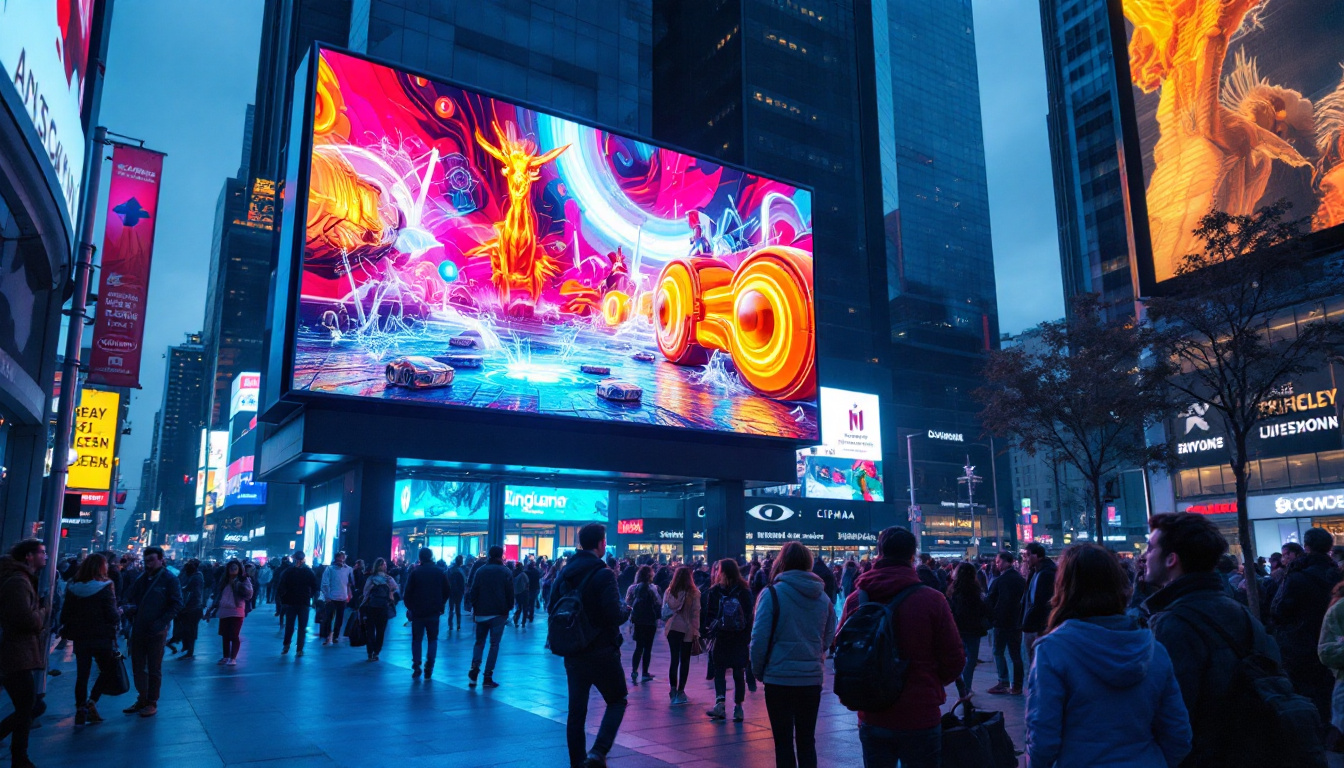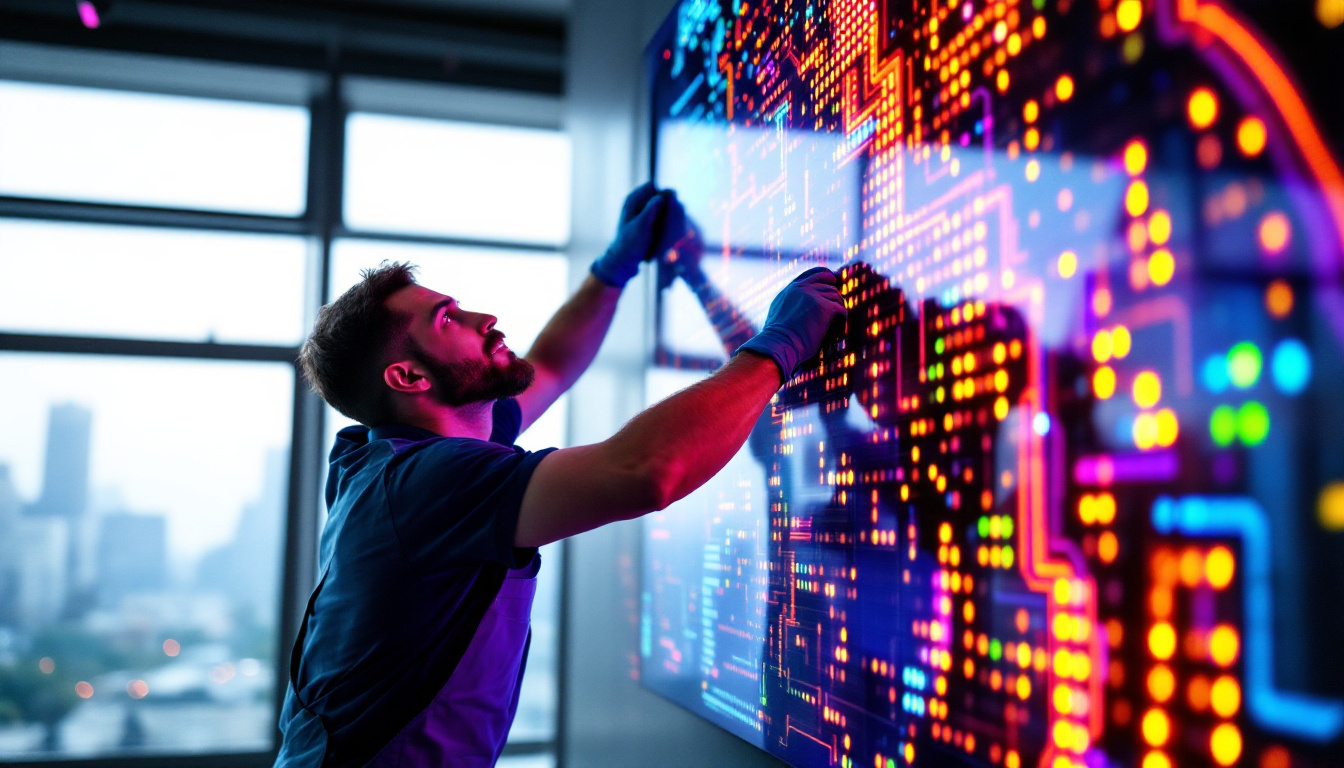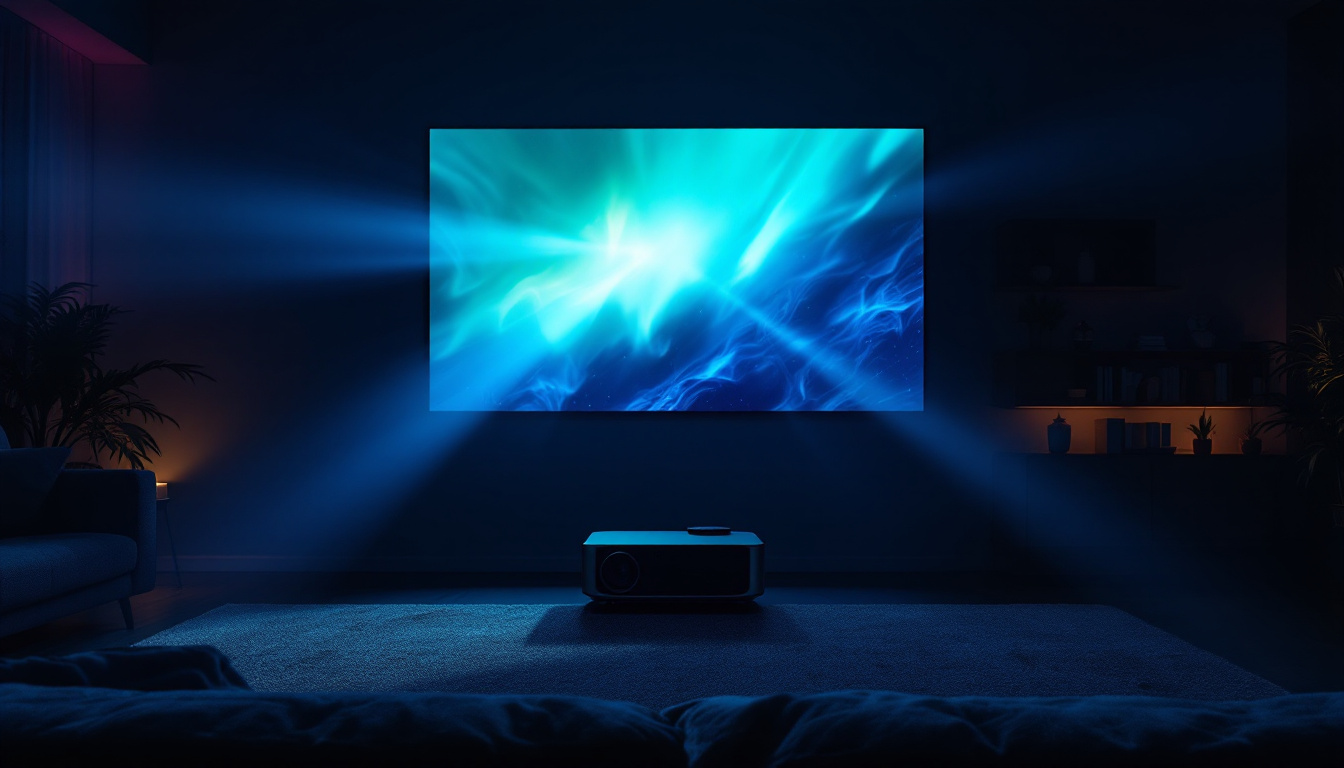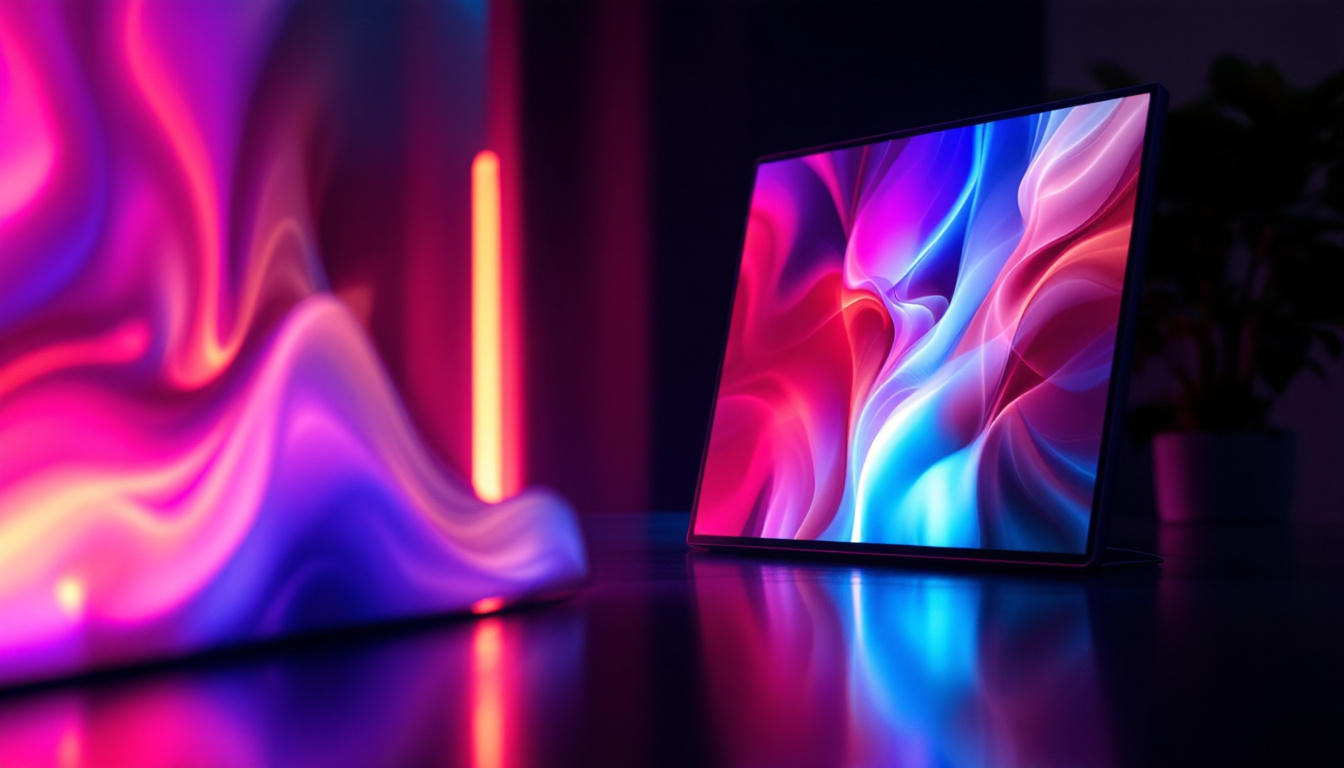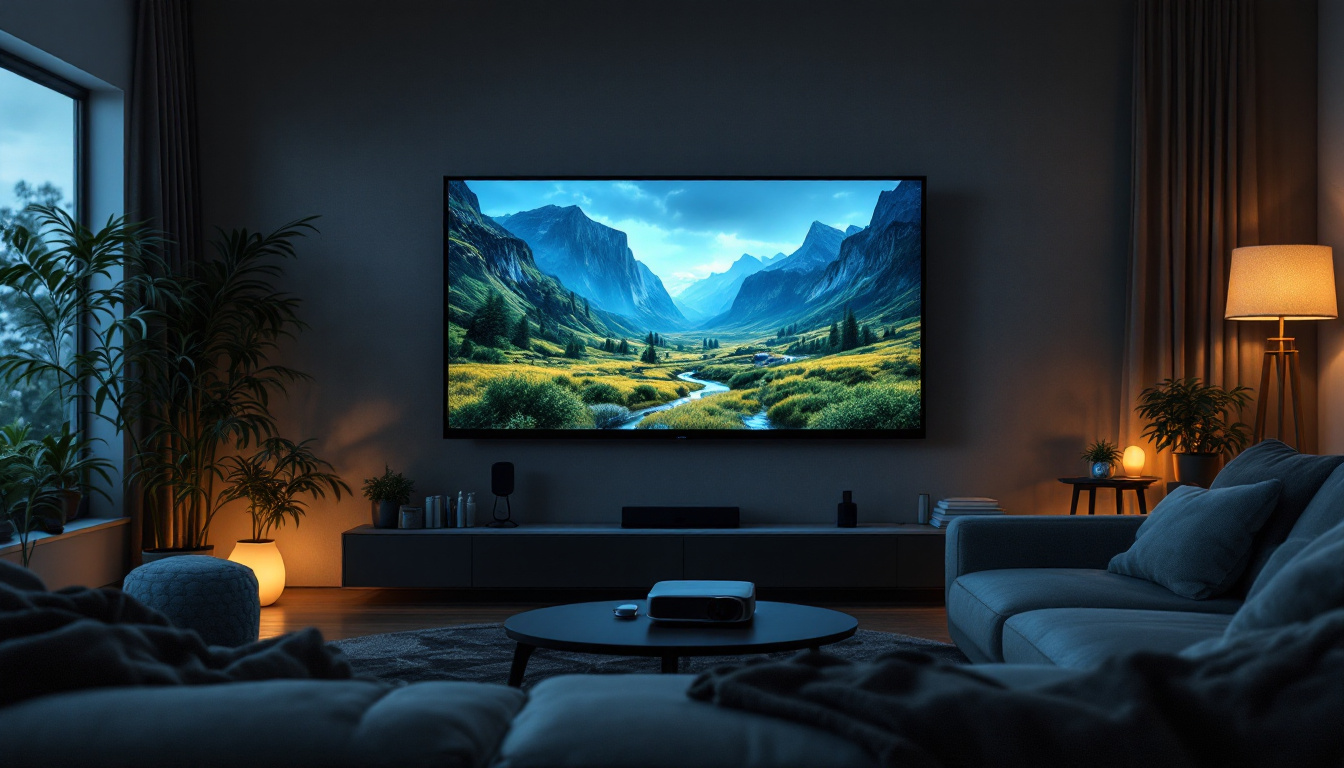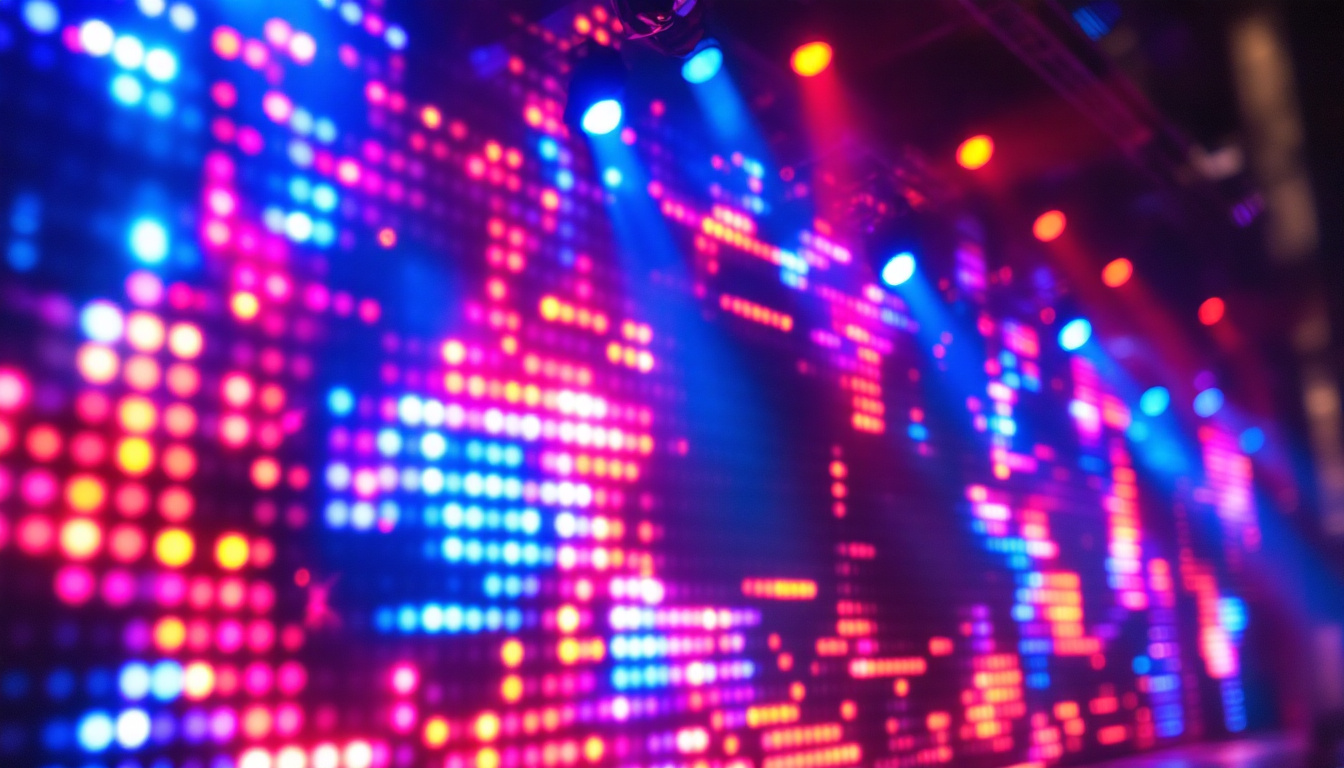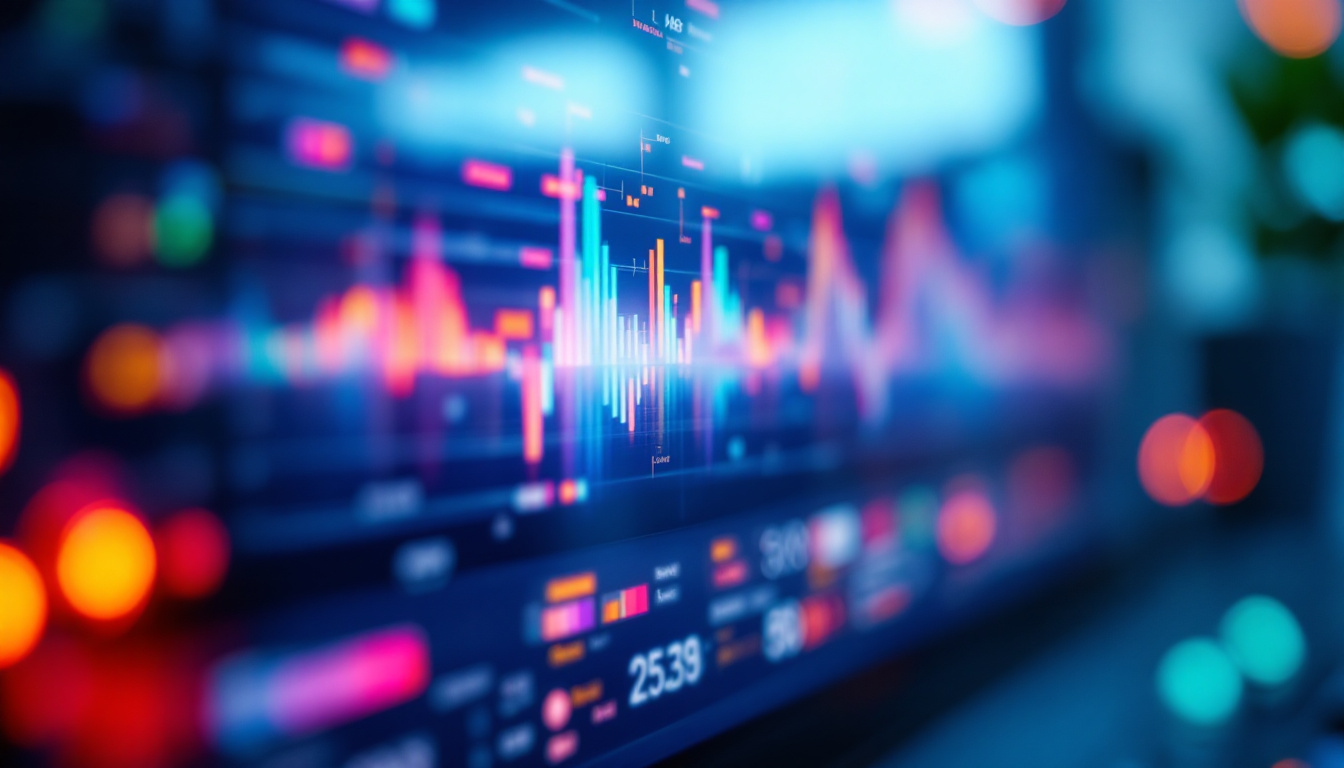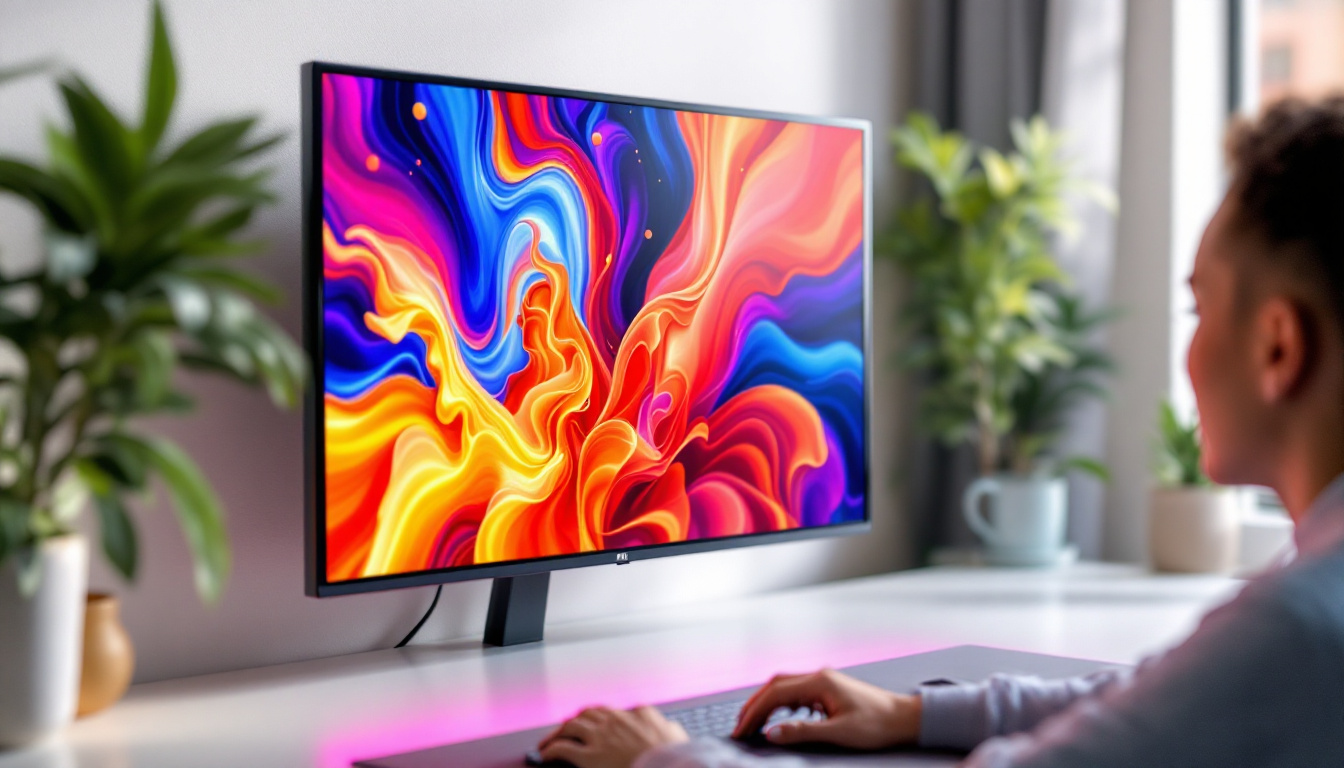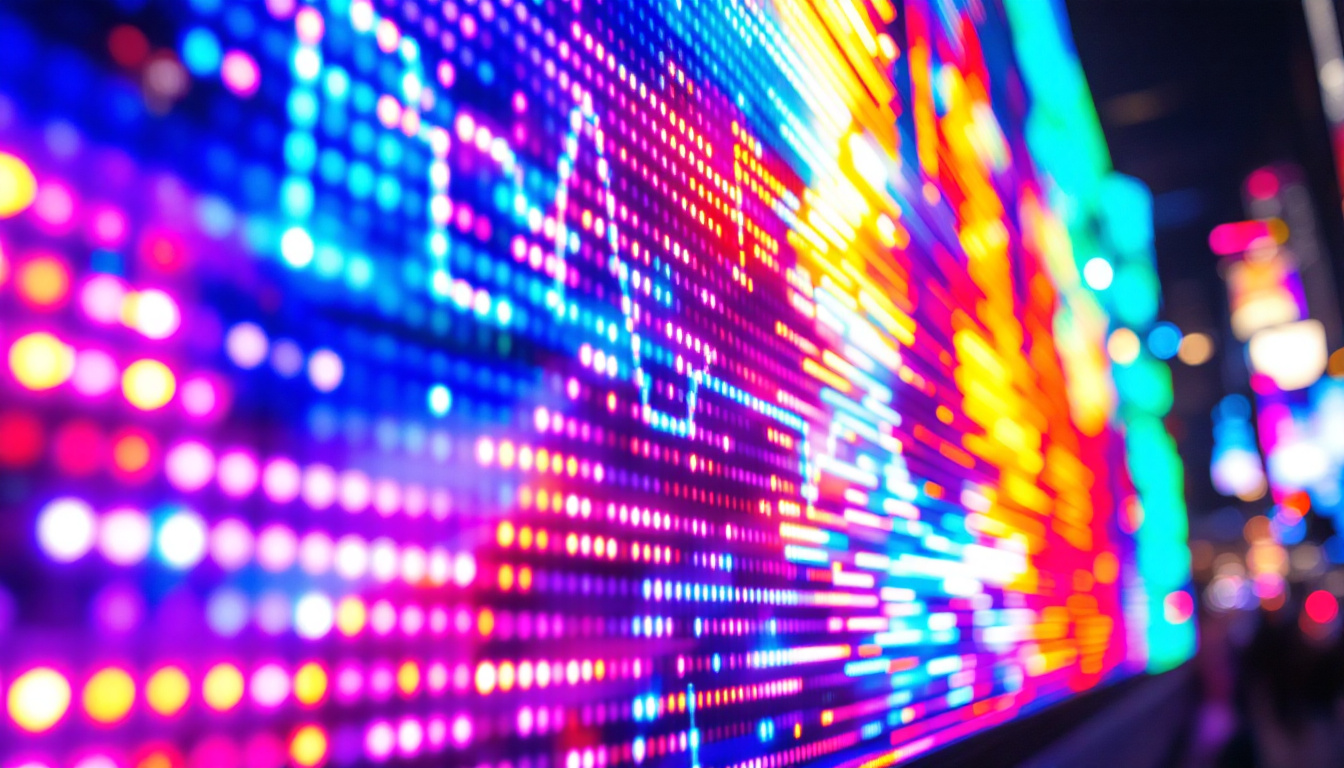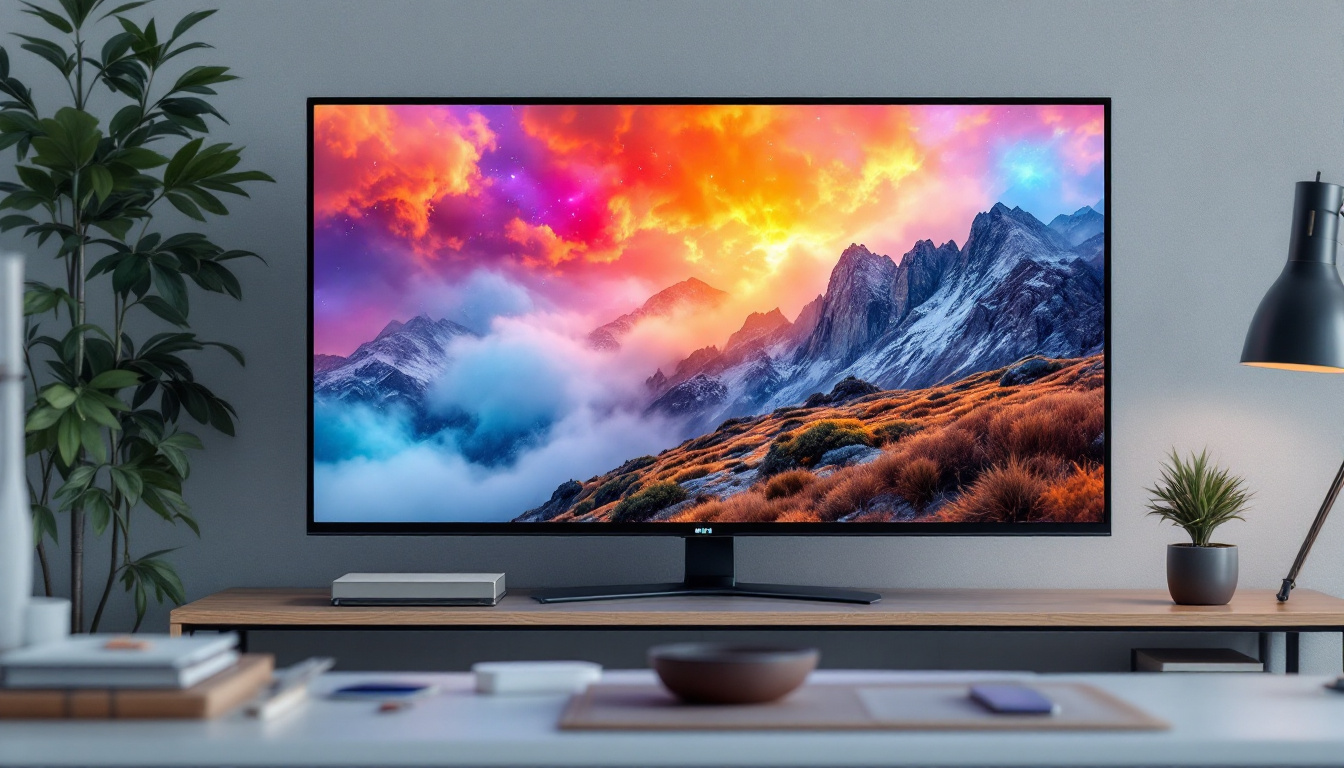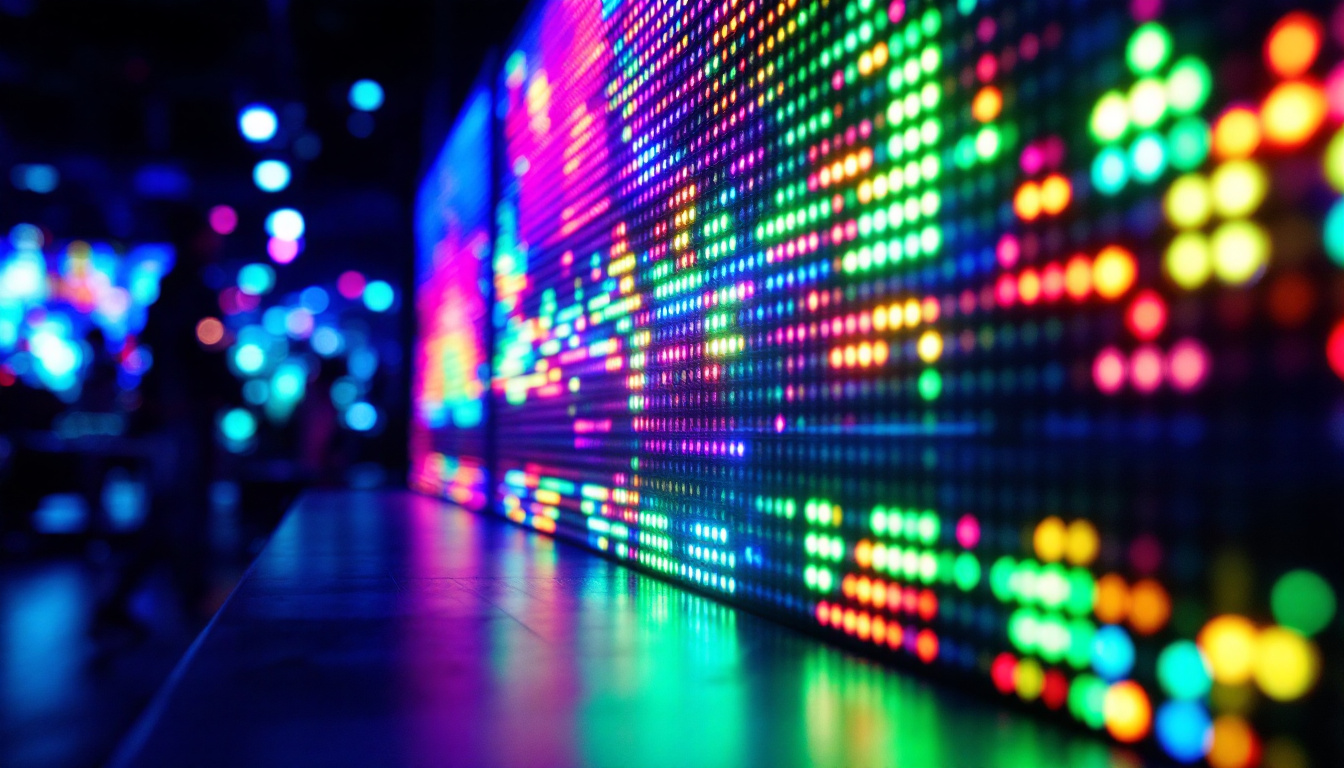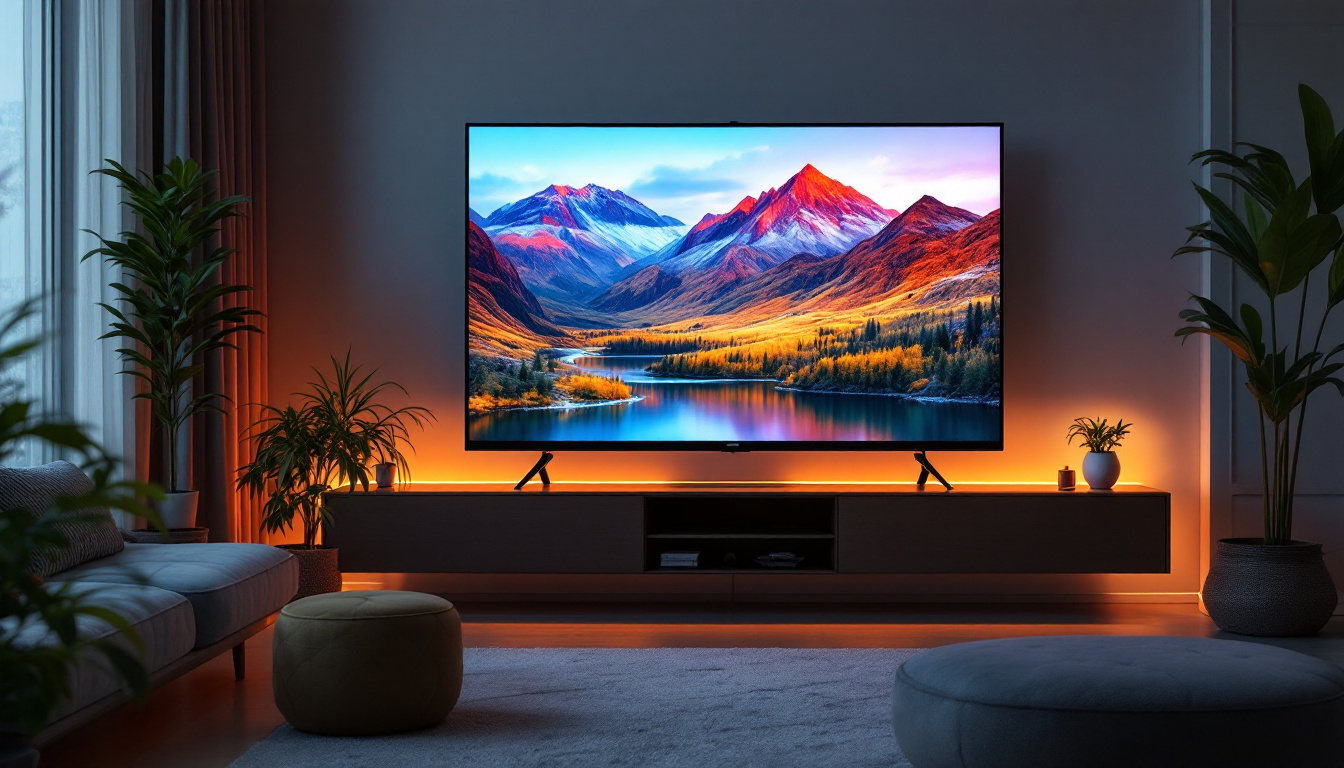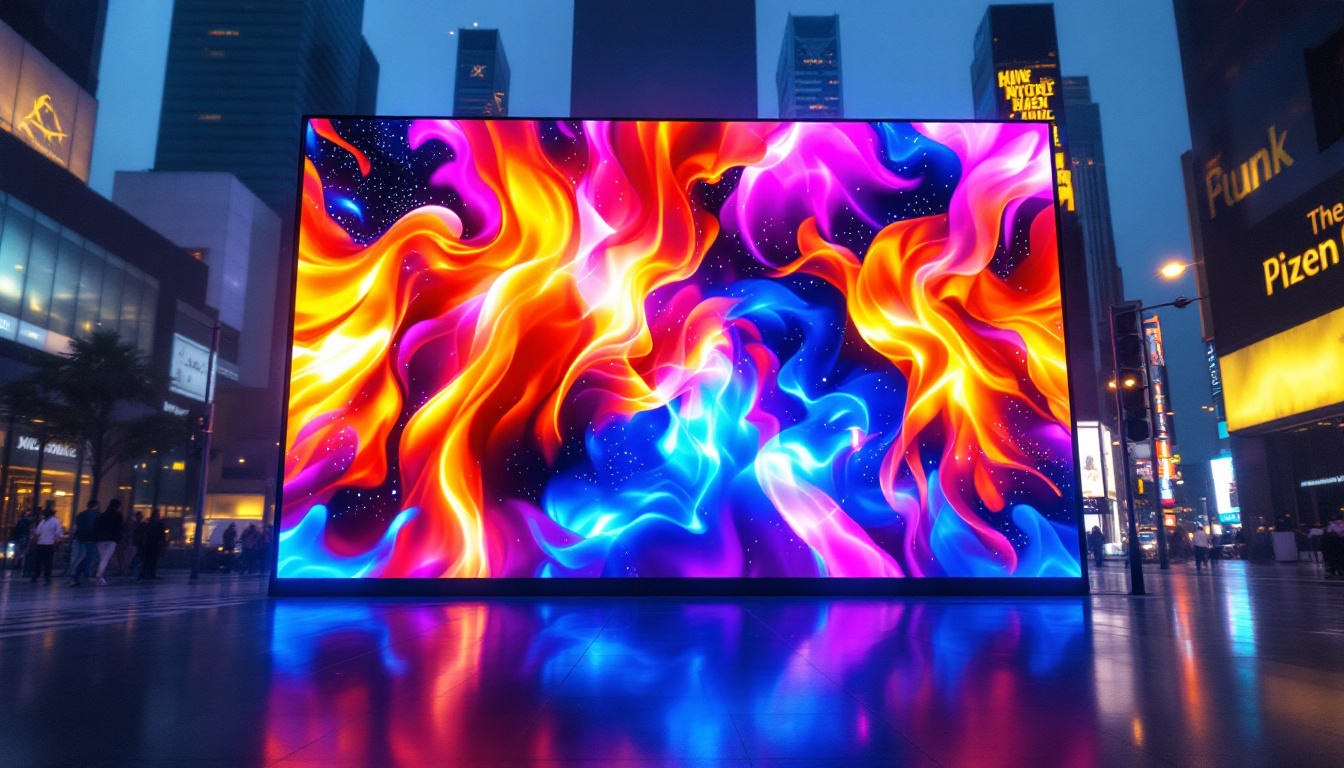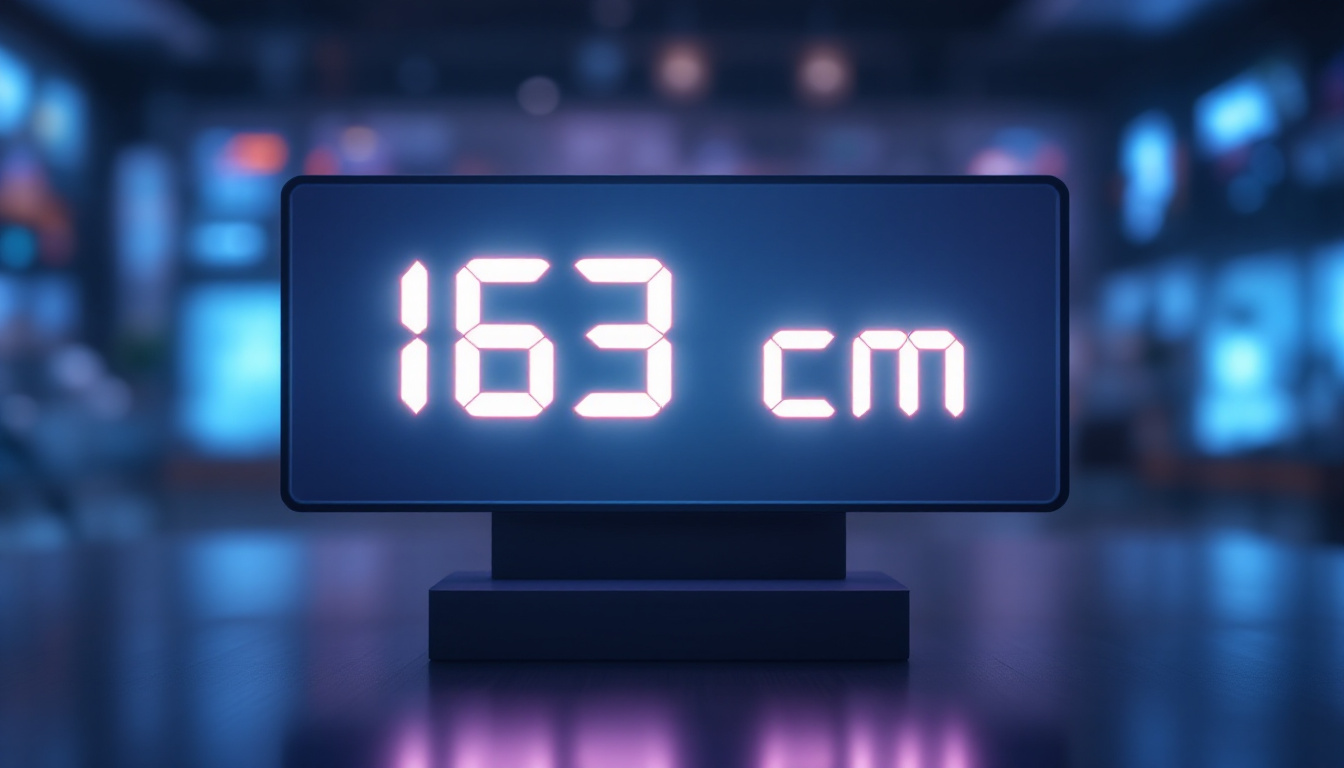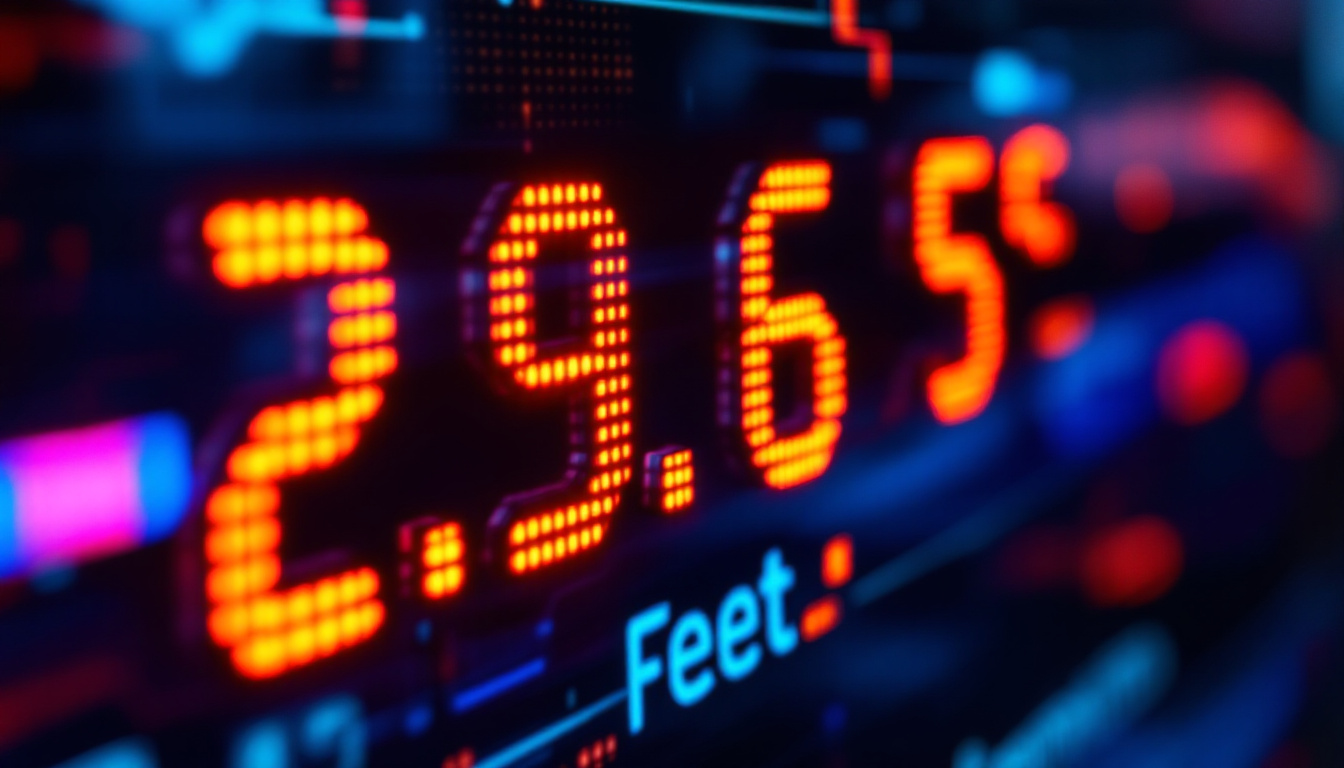The world of display technology has evolved dramatically over the past few decades, with LED displays becoming a popular choice for various applications. Among the many configurations available, the 240 x 1.2 LED display stands out due to its unique specifications and versatility. This article delves into the intricacies of this display type, exploring its features, applications, and the technology behind it.
Understanding LED Displays
LED displays utilize light-emitting diodes (LEDs) to produce images and videos. They are known for their brightness, energy efficiency, and ability to display vibrant colors. The configuration of an LED display is often defined by its pixel arrangement, which is crucial for determining the display’s resolution and clarity. This technology has transformed the way visual content is presented, allowing for dynamic and engaging displays that capture attention in a variety of settings.
What Does 240 x 1.2 Mean?
The term “240 x 1.2” refers to the pixel configuration of the LED display. In this case, “240” indicates the number of pixels in the horizontal direction, while “1.2” typically refers to the pixel pitch, which is the distance between the centers of two adjacent pixels, measured in millimeters. This configuration results in a display that is well-suited for various applications, particularly in environments where space is limited. The compact nature of this setup allows for seamless integration into tight spaces, such as retail displays or transportation hubs, where maximizing visibility is crucial.
The pixel pitch is a critical factor in determining the display’s resolution and viewing distance. A smaller pixel pitch generally means higher resolution, allowing for clearer images when viewed up close. In contrast, a larger pixel pitch may be more appropriate for larger viewing distances. This means that understanding pixel pitch not only influences the quality of the visuals but also impacts the overall viewing experience, as it dictates how closely viewers can approach the display without losing image integrity.
Key Features of 240 x 1.2 LED Displays
240 x 1.2 LED displays come with several notable features that enhance their usability and effectiveness. These include:
- High Brightness: LED technology allows for exceptional brightness levels, making these displays suitable for both indoor and outdoor use.
- Energy Efficiency: Compared to traditional display technologies, LED displays consume significantly less power, which can lead to cost savings over time.
- Durability: LED displays are built to withstand harsh environmental conditions, making them ideal for outdoor installations.
These features make the 240 x 1.2 LED display a versatile option for various industries, including advertising, entertainment, and information dissemination. Additionally, the flexibility in design allows for creative applications, such as curved displays or large video walls, which can transform any space into an immersive visual experience. The integration of smart technology further enhances these displays, enabling features like remote monitoring, content scheduling, and real-time updates, which are invaluable for businesses looking to engage their audience effectively.
Moreover, the rapid advancements in LED technology have led to improvements in color accuracy and contrast ratios, making it possible to produce stunning visuals that captivate viewers. With the ability to support high-definition content, these displays can showcase everything from vibrant advertisements to detailed informational graphics, ensuring that the message is not only seen but felt. As industries continue to evolve, the demand for high-performance LED displays like the 240 x 1.2 configuration is likely to grow, paving the way for innovative applications and enhanced user experiences.
Applications of 240 x 1.2 LED Displays
Due to their unique specifications and capabilities, 240 x 1.2 LED displays find applications across a wide range of fields. Their adaptability allows them to serve different purposes, from advertising to information sharing.
Advertising and Marketing
One of the most prominent uses of LED displays is in advertising and marketing. Businesses leverage the vibrant colors and high brightness of 240 x 1.2 displays to capture the attention of passersby. These displays can showcase dynamic content, including videos, animations, and real-time updates, making them an effective tool for engaging potential customers.
Moreover, the compact size of the 240 x 1.2 configuration allows for installation in various locations, such as storefronts, malls, and public spaces, maximizing visibility and impact.
Events and Entertainment
In the realm of events and entertainment, 240 x 1.2 LED displays are commonly used for concerts, festivals, and sporting events. Their ability to deliver high-quality visuals makes them ideal for large audiences, ensuring that everyone can enjoy the experience, regardless of their location within the venue.
Additionally, these displays can be used for live streaming, providing real-time updates and enhancing audience engagement. The flexibility of LED displays allows event organizers to create immersive experiences that leave a lasting impression on attendees.
Information Dissemination
240 x 1.2 LED displays are also employed for information dissemination in various settings, including transportation hubs, corporate environments, and educational institutions. These displays can convey important messages, schedules, and announcements in a clear and visually appealing manner.
In airports and train stations, for instance, LED displays can provide real-time updates on arrivals and departures, helping travelers stay informed and organized. In corporate offices, they can be used to display company news, performance metrics, and other relevant information to employees.
The Technology Behind LED Displays
Understanding the technology behind LED displays is essential for appreciating their capabilities. Several key components contribute to the performance and quality of a 240 x 1.2 LED display.
LED Technology
At the heart of every LED display are the light-emitting diodes themselves. These diodes emit light when an electrical current passes through them, allowing for the creation of images and videos. The arrangement of these diodes determines the display’s pixel configuration and overall quality.
LEDs can be categorized into different types, including standard, high-brightness, and RGB (red, green, blue) LEDs. RGB LEDs are particularly important for full-color displays, as they can produce a wide spectrum of colors by varying the intensity of each color component.
Control Systems
Another crucial aspect of LED displays is their control systems. These systems manage the input signals and ensure that the correct images and videos are displayed. Advanced control systems can handle multiple input sources, allowing for seamless transitions between different content types.
Some LED displays also incorporate software that enables users to schedule content, monitor performance, and make adjustments in real-time. This level of control enhances the versatility and effectiveness of the display in various applications.
Advantages of 240 x 1.2 LED Displays
The 240 x 1.2 LED display offers several advantages that make it a preferred choice for many applications. Understanding these benefits can help businesses and organizations make informed decisions about their display needs.
Cost-Effectiveness
While the initial investment in LED technology may be higher than traditional display options, the long-term cost savings can be significant. LED displays are known for their durability and low energy consumption, which can lead to reduced operating costs over time.
Additionally, the ability to update content easily and frequently can enhance marketing efforts, potentially leading to increased revenue. Businesses can change advertisements or messages without incurring printing costs, making LED displays a cost-effective solution in the long run.
Enhanced Visibility
The brightness and clarity of 240 x 1.2 LED displays ensure that content remains visible, even in challenging lighting conditions. This is particularly important for outdoor applications, where sunlight can wash out traditional displays.
The high contrast ratio of LED displays also contributes to their visibility. This feature allows for sharp images and text, making it easier for viewers to absorb information quickly and effectively.
Customizability
240 x 1.2 LED displays can be customized to suit specific needs and preferences. Businesses can choose the content, layout, and even the physical design of the display to align with their branding and messaging goals.
This level of customizability extends to the installation process as well. LED displays can be mounted in various orientations and configurations, allowing for creative solutions that maximize visibility and impact.
Challenges and Considerations
Despite their numerous advantages, 240 x 1.2 LED displays also come with challenges that potential users should consider. Addressing these challenges can help organizations make the most of their investment.
Initial Investment
The upfront cost of acquiring and installing LED displays can be a barrier for some businesses. While the long-term savings can offset this initial investment, organizations must be prepared to allocate a significant budget for high-quality displays.
It is essential to conduct a thorough cost-benefit analysis to determine whether the investment aligns with the organization’s goals and budget constraints.
Maintenance and Upkeep
LED displays require regular maintenance to ensure optimal performance. This includes cleaning the display, checking for any malfunctioning pixels, and updating software as needed. Organizations must factor in these ongoing maintenance costs when considering an LED display.
Establishing a maintenance schedule and working with experienced technicians can help mitigate potential issues and extend the lifespan of the display.
Future Trends in LED Display Technology
The LED display industry continues to evolve, with new technologies and trends emerging regularly. Staying informed about these developments can help organizations make strategic decisions regarding their display solutions.
Advancements in Resolution
As technology advances, LED displays are becoming increasingly capable of achieving higher resolutions. This trend is particularly evident in the development of microLED and miniLED technologies, which promise to deliver exceptional image quality and color accuracy.
Higher resolutions will enable LED displays to be used in a broader range of applications, including virtual reality and augmented reality experiences, where clarity and detail are paramount.
Integration with Smart Technology
The integration of LED displays with smart technology is another trend to watch. As the Internet of Things (IoT) continues to grow, LED displays can be connected to various devices and systems, allowing for enhanced interactivity and automation.
This integration can lead to more personalized experiences for users, as displays can adapt content based on real-time data and user preferences.
Conclusion
The 240 x 1.2 LED display represents a significant advancement in display technology, offering numerous benefits for a wide range of applications. Its unique configuration, combined with the advantages of LED technology, makes it a versatile choice for businesses and organizations looking to enhance their visibility and engagement.
While challenges such as initial investment and maintenance exist, the long-term cost savings and enhanced visibility make LED displays a worthwhile investment. As technology continues to evolve, the future of LED displays looks promising, with advancements in resolution and smart technology integration paving the way for even more innovative applications.
In summary, the 240 x 1.2 LED display is not just a tool for displaying information; it is a powerful medium for communication and engagement in an increasingly digital world.
Discover LumenMatrix’s Advanced LED Solutions
Ready to elevate your visual communication with the latest in LED display technology? LumenMatrix offers a comprehensive range of innovative solutions tailored to meet your needs. From Indoor and Outdoor LED Wall Displays to specialized options like Vehicle, Sports, and Floor LED Displays, our products are designed to captivate and engage your audience. Embrace the future of digital signage with our Custom, All-in-One, and Transparent LED Displays. Experience the transformative power of LumenMatrix and bring your brand’s message to life with unparalleled clarity and impact. Check out LumenMatrix LED Display Solutions today and see the difference for yourself.


